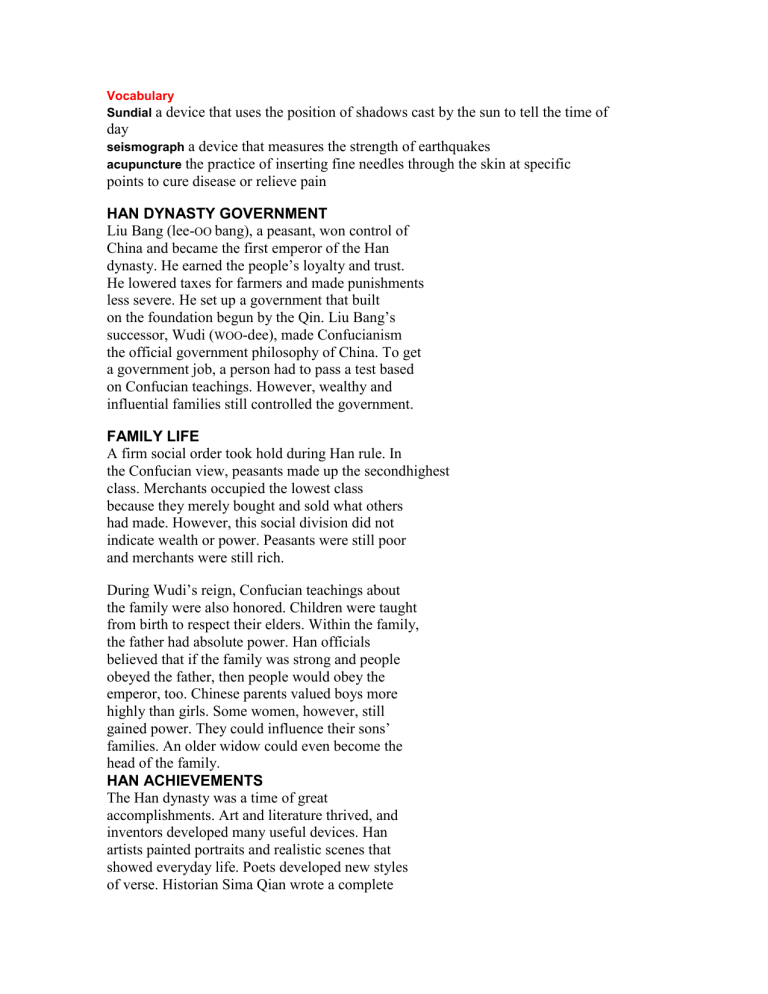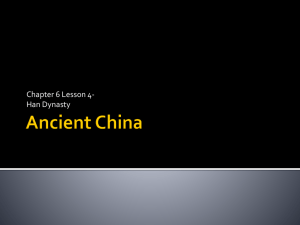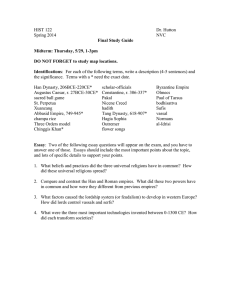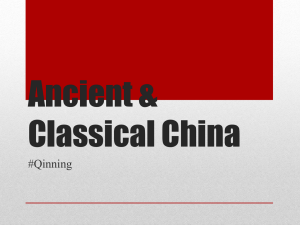
Vocabulary Sundial a device that uses the position of shadows cast by the sun to tell the time of day seismograph a device that measures the strength of earthquakes acupuncture the practice of inserting fine needles through the skin points to cure disease or relieve pain HAN DYNASTY GOVERNMENT Liu Bang (lee-OO bang), a peasant, won control of China and became the first emperor of the Han dynasty. He earned the people’s loyalty and trust. He lowered taxes for farmers and made punishments less severe. He set up a government that built on the foundation begun by the Qin. Liu Bang’s successor, Wudi (WOO-dee), made Confucianism the official government philosophy of China. To get a government job, a person had to pass a test based on Confucian teachings. However, wealthy and influential families still controlled the government. FAMILY LIFE A firm social order took hold during Han rule. In the Confucian view, peasants made up the secondhighest class. Merchants occupied the lowest class because they merely bought and sold what others had made. However, this social division did not indicate wealth or power. Peasants were still poor and merchants were still rich. During Wudi’s reign, Confucian teachings about the family were also honored. Children were taught from birth to respect their elders. Within the family, the father had absolute power. Han officials believed that if the family was strong and people obeyed the father, then people would obey the emperor, too. Chinese parents valued boys more highly than girls. Some women, however, still gained power. They could influence their sons’ families. An older widow could even become the head of the family. HAN ACHIEVEMENTS The Han dynasty was a time of great accomplishments. Art and literature thrived, and inventors developed many useful devices. Han artists painted portraits and realistic scenes that showed everyday life. Poets developed new styles of verse. Historian Sima Qian wrote a complete at specific history of China until the Han dynasty. The Han Chinese invented paper. They made it by grinding plant fibers into a paste and then letting it dry in sheets. They made “books” by pasting sheets together into a long sheet that was rolled into a scroll. Other Han innovations included the sundial and the seismograph. They developed the distinctive Chinese medical practice of acupuncture (AK-yoopunkcher). These and other Han inventions and advances are still used today.




